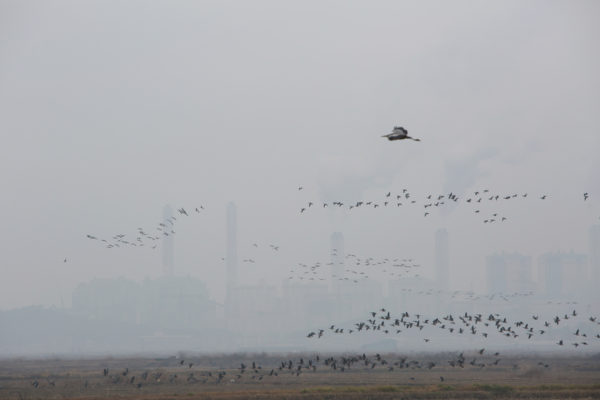Analysis: can South Korea’s coal clampdown clean up its air?
South Korea has announced it will cut air pollution 30% within five years. Coal is a key target

South Korea’s new government has announced its latest assault on air pollution. Last month, it made a public commitment to cut particulate pollution by 30% within five years.
It plans to do so by cracking down on coal plants, taking millions of diesel vehicles off the road and cutting emissions from industries, construction and ships.
Korea is now predicted to be among the countries worst hit by the global air pollution crisis, both in terms of health and the economy. In 2016, the annual average for the fine particulate PM2.5 was two and a half times higher than the World Health Organisation’s guidelines.
But although the government’s plans hinge on a crackdown on coal power, the plans will be a bittersweet victory for Korea’s anti-coal movement.
Coal crackdown
South Koreans want change. According to a survey of the Korean Medical Association, two-thirds of South Koreans opposed the construction of new coal power plants in 2016.
Although up to half of Korea’s air pollution comes from overseas, around 15% of domestic PM2.5 generation comes from coal plants.
The plan aims to cut 25% of emissions from coal plants by 2022, reduce coal-generated electricity and increase the proportion of energy that comes from renewables and natural gas.
In the short-term, new coal-fired power plant projects will be re-examined.
Five projects are in the pipeline. Three will still proceed as planned, with stricteremissions standards and the most advanced pollution-reduction technologies available. For the remaining two, the government will negotiate with the companies to switch them to natural gas. The corporations are likely to resist.
Coal plants that are more than 30 years old will be shut down from March to June each year, when seasonal air pollution is high. Those that are older still will be retired by 2022, earlier than their projected lifespans.
After these plants are dealt with, all new coal plant construction will be banned. Energy taxes will be reformed. Environmental and safety factors will be included in the costs of generating coal and nuclear.
Bittersweet
For a country that hosts the world’s second largest coal plant, the changes are significant. South Korea currently generates around 40% of its electricity from coal. Its land covers an area of just 100,210 km2 but it has the highest density of coal plants among OECD member countries.
The decline of coal and nuclear will create more space for renewables, which will increase its proportion in the energy mix to 20% by 2030.
But this plan is a bittersweet victory for the Korean anti-coal movement.
The proportion of renewables in the power mix is now just above 1%.
The target of 20% by 2030 looks like a long shot considering the current political, economic and technical landscapes. Coal and and nuclear still enjoy a preferential tax system, consumers cannot purchase electricity directly from renewable sources, and there is still a lack of public awareness about the issue.
However, greater reliance on renewable energy is possible and achievable in Korea. According to research by the Korea Institute of Energy Research, South Korea’s renewables have the technical capacity to produce 22 times more than the total electricity consumed in 2015.
Globally, the energy transition is clearly happening; the world is shifting to renewables. Reducing air pollution is a key political promise made by President Moon Jae-in to his voters, and a partial coal phase-out is a very significant decision, clearly supported by the public.
Now is the time to ask: can South Korea go further and become a global leader?
Minwoo Son is a climate and energy campaigner from South Korea




